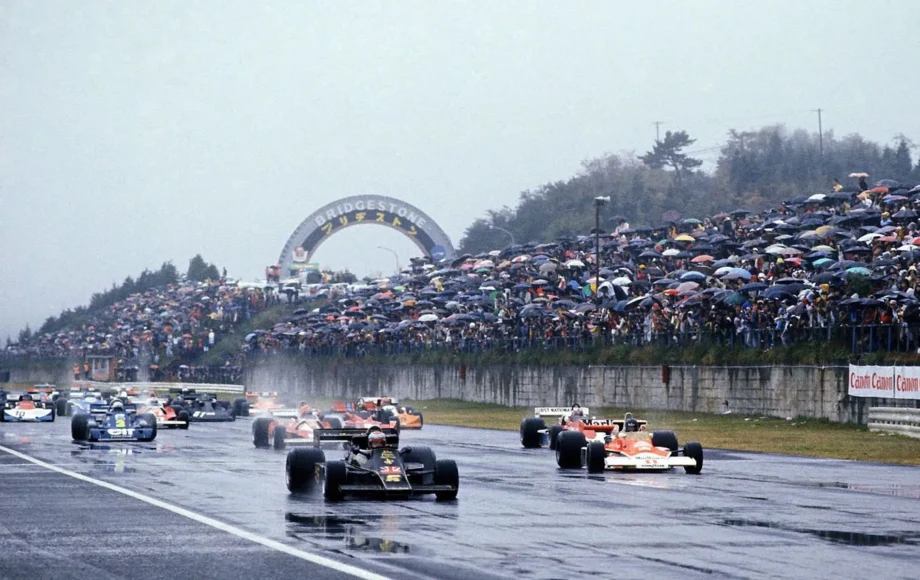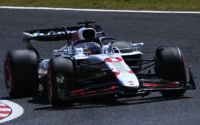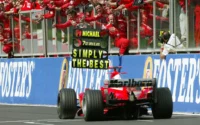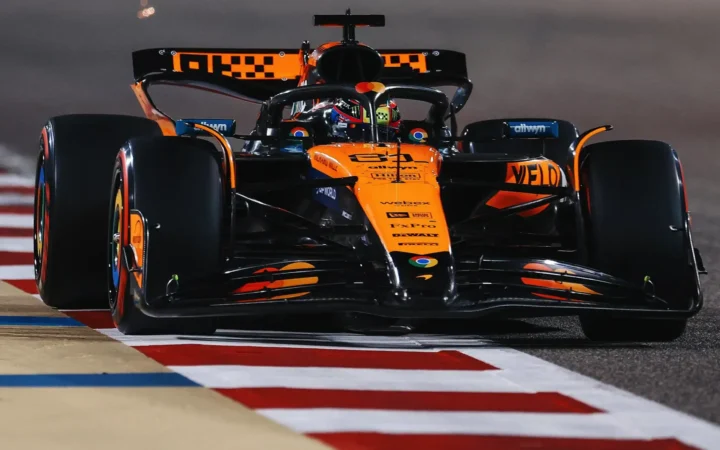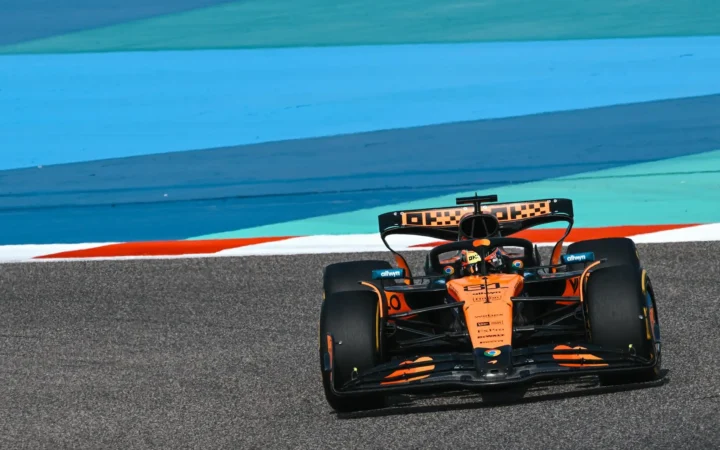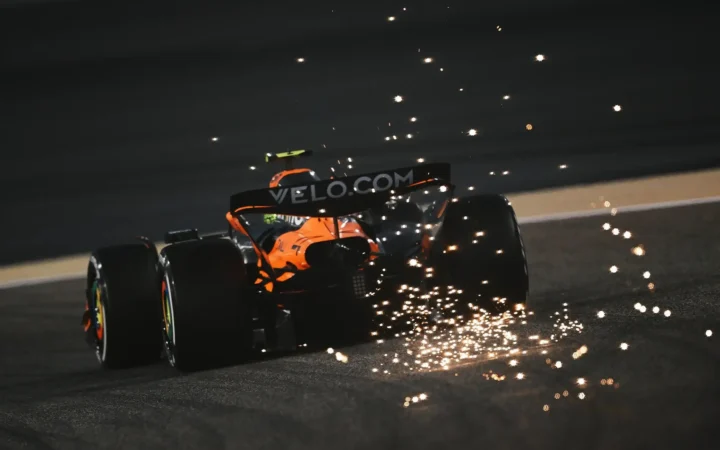In the autumn of 1976, the world of Formula 1 descended upon the Fuji Speedway for the highly anticipated Japanese Grand Prix. Taking place on the 24th of October, it served as the 16th and final race of the ’76 season.
The 1976 Japanese Grand Prix remains one of the most iconic races in F1 history in a season that was marred by dramatic accidents and the resilience of Niki Lauda to become race fit again to go up against British driver James Hunt, who would clinch his first and only Drivers’ Championship that day.
1976 Japanese Grand Prix
The backdrop to the Japanese Grand Prix was a season fraught with big in-season events, including two drivers battling for the championship battle. As Niki Lauda and James Hunt arrived at the Mount Fuji circuit, the Austrian maestro, Niki Lauda, held a small lead of just three points over the charismatic Brit, James Hunt.
The 1976 season will be remembered for a series of incidents non-more than the one suffered by Lauda in a harrowing crash at the Nürburgring. An accident that left Lauda with severe burns to his face and body and terrible lung damage. In an incredible display of determination, Lauda only allowed himself to miss two races, unable to sit on the sidelines and see his potential championship slip away.
This near-fatal crash at the Nürburgring made the Japanese Grand Prix a must-watch race as fans eagerly anticipated the showdown between the injured but undeterred Lauda and his rival, James Hunt.
1976 Drivers’ Championship on the line
As the final race of the season loomed, Niki Lauda found himself at the top of the World Drivers’ Championship, holding a narrow three-point lead over James Hunt. With just one race left in the season and a maximum of nine points up for grabs, the race would ultimately determine the fate of the Drivers’ Championship.
Ferrari enjoyed a comfortable eleven-point advantage in the Constructors’ Championship over McLaren and had already secured the Constructors’ title in the previous race. Leaving the permutations for the Driver’s Championship with the following scenarios:
Niki Lauda
For Niki Lauda to clinch the Championship, he had to:
- Finish ahead of Hunt.
- Finish in 3rd place with Hunt coming in 2nd.
- Finish in 4th or 5th place, with Hunt securing 3rd.
- Finish 6th with Hunt in 4th place or lower.
- Hope for Hunt to finish 5th or lower.
James Hunt
In contrast, for James Hunt to secure the Championship, he had to:
- Win the race.
- Finish 2nd with Lauda placing 4th or lower.
- Finish 3rd with Lauda in 6th place or lower.
- Finish 4th with Lauda in 7th place or lower.
This left both drivers and their respective teams ready to seize any opportunity to tip the balance in their favour at the Japanese Grand Prix.
What happened in the 1976 Japanese Grand Prix?
Opening laps
On race day, the skies opened up, drenching the circuit at Fuji Speedway with a relentless downpour. The heavy rain was accompanied by thick fog, and the track featured running water in several critical sections. As the rain continued to pour, a heated debate ensued among the teams, drivers, and race organisers about whether it was safe to start the race. Ultimately, the decision was made to proceed, and most drivers agreed. However, not everyone did, including Niki Lauda, who expressed his concerns.
From the very start, James Hunt seized the lead, with John Watson and Mario Andretti closely trailing behind. The second lap saw Watson skidding off the track and down an escape road. On the same lap, Lauda decided to enter the pits and withdraw from the race. Lauda’s conviction was clear; he believed the deteriorating weather had rendered the circuit too treacherous for racing on. He said, “My life is worth more than a title.” Larry Perkins made a similar call, retiring after just one lap, while Pace and Emerson Fittipaldi followed suit later in the race.
Mid-race battles
As Hunt continued to lead the race, second place became a revolving door, with positions shifting between Andretti and Vittorio Brambilla. On the 22nd lap, Brambilla made a bold challenge for the lead but, unfortunately, spun out of contention. Fifteen laps later, he was forced to retire due to electrical problems. This paved the way for Jochen Mass to take second. However, Mass’s fortunes took a downturn on the 36th lap when he crashed near turn 7, opening the door for Patrick Depailler to inherit second, with Andretti not far behind in third.
Final laps
In the closing phases, Hunt appeared poised for a relatively straightforward win. But as the rain gradually subsided and the track began to dry, his fortunes turned on lap 62. He lost positions due to tyre degradation, slipping behind Depailler and Andretti. However, he wasn’t the only driver, as Depailler encountered a similar tyre problem.
Hunt was forced to pit, relinquishing his lead and dropping to fifth. With fresh tyres, Hunt set off after Depailler, Alan Jones, and Clay Regazzoni. On the 70th lap, Depailler overtook Jones and Regazzoni and took the lead. Not to be outdone, Hunt replicated the feat on the following lap, passing both drivers and securing the championship. In a moment of brief confusion, the unofficial results initially placed him in fifth, which was swiftly rectified to confirm his third-place finish.
Andretti’s race win marked his second win in F1 after an incredible five-year gap since his first at the 1971 South African Grand Prix.
James Hunt’s first F1 Drivers’ World Championship
James Hunt’s first Formula One Drivers’ World Championship in 1976 would go on to define his legacy as one of F1’s most charismatic and iconic figures.
Born on August 29, 1947, in Belmont, England, James Simon Wallis Hunt exhibited a passion for racing early on. He began his career in motorsport in the late 1960s, climbing the ranks from lower formulae to eventually reaching Formula One.
Hunt’s journey to the championship was not without obstacles. He made his Formula One debut with the Hesketh Racing team in 1973, but his career reached its peak in 1976. The 1976 Formula One season was characterised by the intense rivalry between Hunt and Austrian driver Niki Lauda, who raced for Ferrari. His performance in the final race of the season saw him overcome tyre issues, a series of pit stops, and terrible weather conditions to finish third. The 1976 championship made James Hunt a legend in the sport, with his electrifying driving style and larger-than-life personality endearing him to fans worldwide.
Sadly, Hunt’s reign as the F1 Champion was short-lived. He failed to defend his title in the following season, and the ’76 title was the only one he claimed.
1976 Japanese Grand Prix Race Results
| Pos | No | Driver | Car | Laps | Time/Retired | PTS |
|---|---|---|---|---|---|---|
| 1 | 5 | Mario Andretti | Lotus Ford | 73 | 1:43:58.860 | 9 |
| 2 | 4 | Patrick Depailler | Tyrrell Ford | 72 | +1 lap | 6 |
| 3 | 11 | James Hunt | McLaren Ford | 72 | +1 lap | 4 |
| 4 | 19 | Alan Jones | Surtees Ford | 72 | +1 lap | 3 |
| 5 | 2 | Clay Regazzoni | Ferrari | 72 | +1 lap | 2 |
| 6 | 6 | Gunnar Nilsson | Lotus Ford | 72 | +1 lap | 1 |
| 7 | 26 | Jacques Laffite | Ligier Matra | 72 | +1 lap | 0 |
| 8 | 24 | Harald Ertl | Hesketh Ford | 72 | +1 lap | 0 |
| 9 | 18 | Noritake Takahara | Surtees Ford | 70 | +3 laps | 0 |
| 10 | 17 | Jean-Pierre Jarier | Shadow Ford | 69 | +4 laps | 0 |
| 11 | 51 | Masahiro Hasemi | Kojima Ford | 66 | +7 laps | 0 |
| NC | 3 | Jody Scheckter | Tyrrell Ford | 58 | DNF | 0 |
| NC | 21 | Hans Binder | Wolf-Williams | 49 | DNF | 0 |
| NC | 16 | Tom Pryce | Shadow Ford | 46 | DNF | 0 |
| NC | 9 | Vittorio Brambilla | March Ford | 38 | DNF | 0 |
| NC | 34 | Hans-Joachim Stuck | March Ford | 37 | DNF | 0 |
| NC | 12 | Jochen Mass | McLaren Ford | 35 | DNF | 0 |
| NC | 28 | John Watson | Penske Ford | 33 | DNF | 0 |
| NC | 52 | Kazuyoshi Hoshino | Tyrrell Ford | 27 | DNF | 0 |
| NC | 20 | Arturo Merzario | Wolf-Williams | 23 | DNF | 0 |
| NC | 30 | Emerson Fittipaldi | Fittipaldi Ford | 9 | DNF | 0 |
| NC | 8 | Carlos Pace | Brabham Alfa Romeo | 7 | DNF | 0 |
| NC | 1 | Niki Lauda | Ferrari | 2 | DNF | 0 |
| NC | 7 | Larry Perkins | Brabham Alfa Romeo | 1 | DNF | 0 |
| NC | 10 | Ronnie Peterson | March Ford | 0 | DNF | 0 |
1976 Post-Race F1 Championship Standings
1976 Post-Race F1 Drivers’ Championship Standings
| Pos | Driver | Nationality | Car | PTS |
|---|---|---|---|---|
| 1 | James Hunt | GBR | McLaren Ford | 69 |
| 2 | Niki Lauda | AUT | Ferrari | 68 |
| 3 | Jody Scheckter | RSA | Tyrrell Ford | 49 |
| 4 | Patrick Depailler | FRA | Tyrrell Ford | 39 |
| 5 | Clay Regazzoni | SUI | Ferrari | 31 |
| 6 | Mario Andretti | USA | Lotus Ford | 22 |
| 7 | John Watson | GBR | Penske Ford | 20 |
| 7 | Jacques Laffite | FRA | Ligier Matra | 20 |
| 9 | Jochen Mass | GER | McLaren Ford | 19 |
| 10 | Gunnar Nilsson | SWE | Lotus Ford | 11 |
| 11 | Ronnie Peterson | SWE | March Ford | 10 |
| 11 | Tom Pryce | GBR | Shadow Ford | 10 |
| 13 | Hans-Joachim Stuck | GER | March Ford | 8 |
| 14 | Carlos Pace | BRA | Brabham Alfa Romeo | 7 |
| 14 | Alan Jones | AUS | Surtees Ford | 7 |
| 16 | Carlos Reutemann | ARG | Ferrari | 3 |
| 16 | Emerson Fittipaldi | BRA | Fittipaldi Ford | 3 |
| 18 | Chris Amon | NZL | Wolf-Williams | 2 |
| 19 | Rolf Stommelen | GER | Brabham Alfa Romeo | 1 |
| 19 | Vittorio Brambilla | ITA | March Ford | 1 |
1976 Post-Race F1 Constructors’ Championship Standings
| Pos | Team | PTS |
|---|---|---|
| 1 | Ferrari | 83 |
| 2 | McLaren Ford | 74 |
| 3 | Tyrrell Ford | 71 |
| 4 | Lotus Ford | 29 |
| 5 | Penske Ford | 20 |
| 6 | Ligier Matra | 20 |
| 7 | March Ford | 19 |
| 8 | Shadow Ford | 10 |
| 9 | Brabham Alfa Romeo | 9 |
| 10 | Surtees Ford | 7 |
| 11 | Fittipaldi Ford | 3 |
| 12 | Ensign Ford | 2 |
| 13 | Parnelli Ford | 1 |
Seen in:

